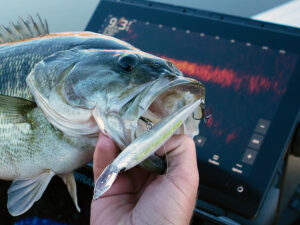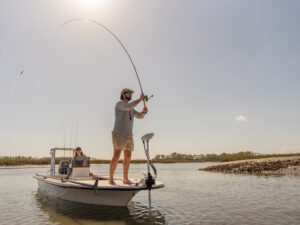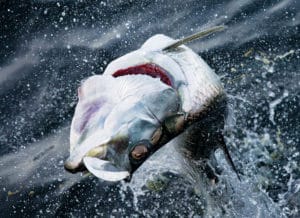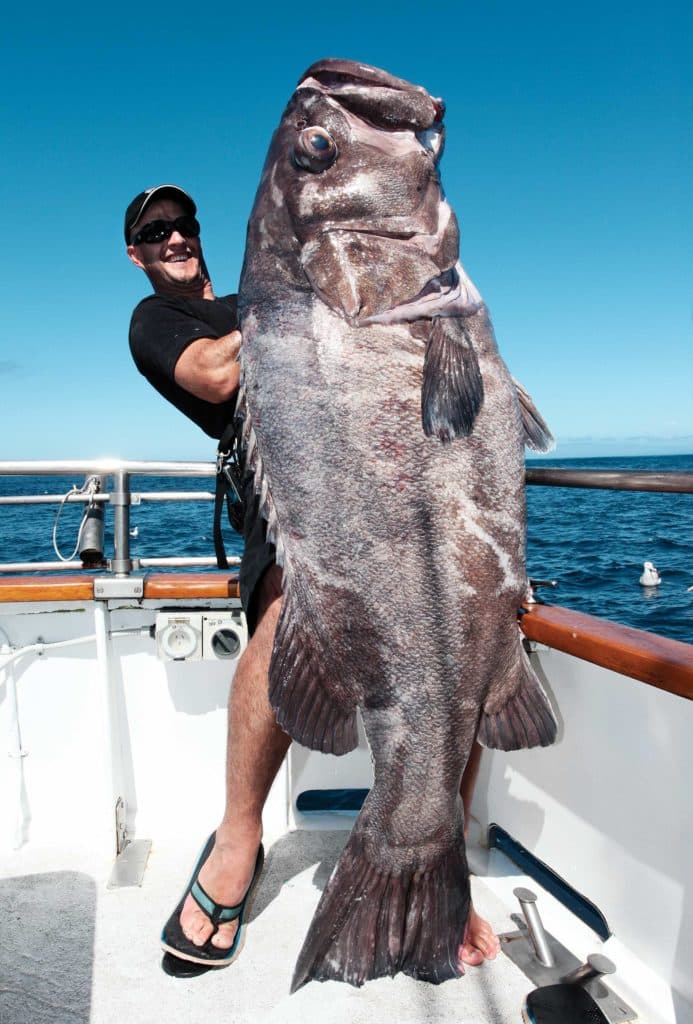
In the yin and yang of tackle design, the development of specialized gear can be circular. Thus, with jigging gaining in worldwide interest and popularity, tackle manufacturers make better and better jigging gear. At the same time, with manufacturers making better and better gear, jigging seems to make commensurate gains in popularity. As a sport, jigging is a niche within the niche of saltwater fishing, and it has generated a range of reels and rods made especially for fishing jigs.
But all jigging tackle is not created equal: There’s gear made for speed jigging and for slow-pitch jigging. The difference, in brief, is critical because each method requires different gear. Speed jigging generally relies on longer, thinner “knife” jigs that are worked upward with a rapid, rhythmic cadence. Slow-pitch jigging involves considerably more finesse; these jigs are moved with a quick upward lift, then allowed to drop a short distance as they take up the slack line created by the lift.
Picking a Jigging Reel
Reel Type
First up in determining what reels will work best for your fishing: the type—spin or conventional. The majority opinion among experts suggests that for speed jigging, either spin or conventional can be fine. But for slow-pitching, think conventional.
“Slow pitch is all about finesse and sensitivity,” Paul Chua says. (See sidebar “Four Jigging Experts, page 90, for information on jigging pros quoted here.) It’s also about “understanding the underwater conditions, jig action, and currents through your line and rod to the angler. Conventional reels don’t have the gyro movement of a spinning reel and can better transfer all the movements of a jig to the angler.”
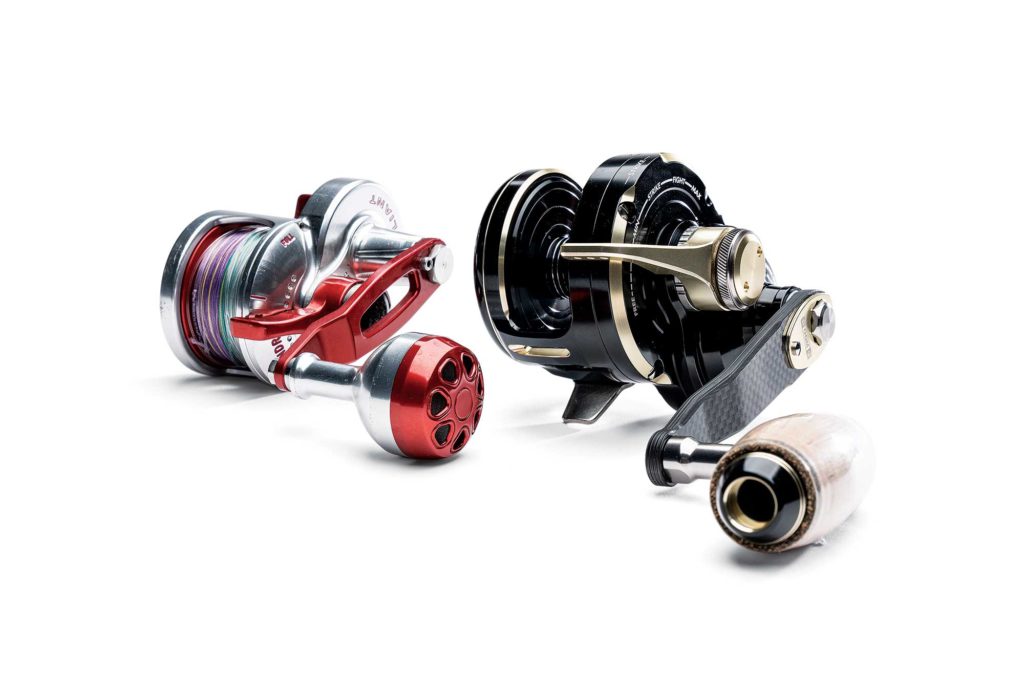
For speed jigging, Chris Wong also favors conventionals, which not only handle heavier jigs better, but they also deal with the “brutality of mechanical [speed] jigging,” including dealing with big, tough fish such as yellowtail and tuna. “With spinning gear,” he says, “I found myself struggling to even turn the handle” after hooking such species. “Spinners struggle in this area, whereas conventional reels excel.”
Slow-pitch enthusiasts require lighter lines, often in the 20- to 40-pound range. Some slow-pitchers will go considerably lighter, seeking the thinnest braids they can find, to get jigs very deep—more than 2,000 feet for some Japanese experts, Wong says.
Reel Weight
Jigging requires endlessly lifting reel and rod repetitively; lighter reels are a huge plus. The trend toward smaller reels for jigging has produced some remarkably compact conventional reels capable of holding plenty of surprisingly heavy line (it’s far more difficult to radically downsize spinners without losing key performance parameters). “Once you’re over 20 ounces a reel, it gets to be a bit much,” Benny Ortiz says. “Over 25 ounces, and it is too much.” He cites a time not so long ago when jig anglers had to rely on reels weighing 30 to 40 ounces (which in case your math isn’t so good, means a couple of pounds or more). Now, he says, he can jig 800 feet of water with a tiny lever drag weighing about 15 ounces. But Ortiz does caution against “sacrificing strength for light weight,” which in part is where the quality of the reel comes into play.
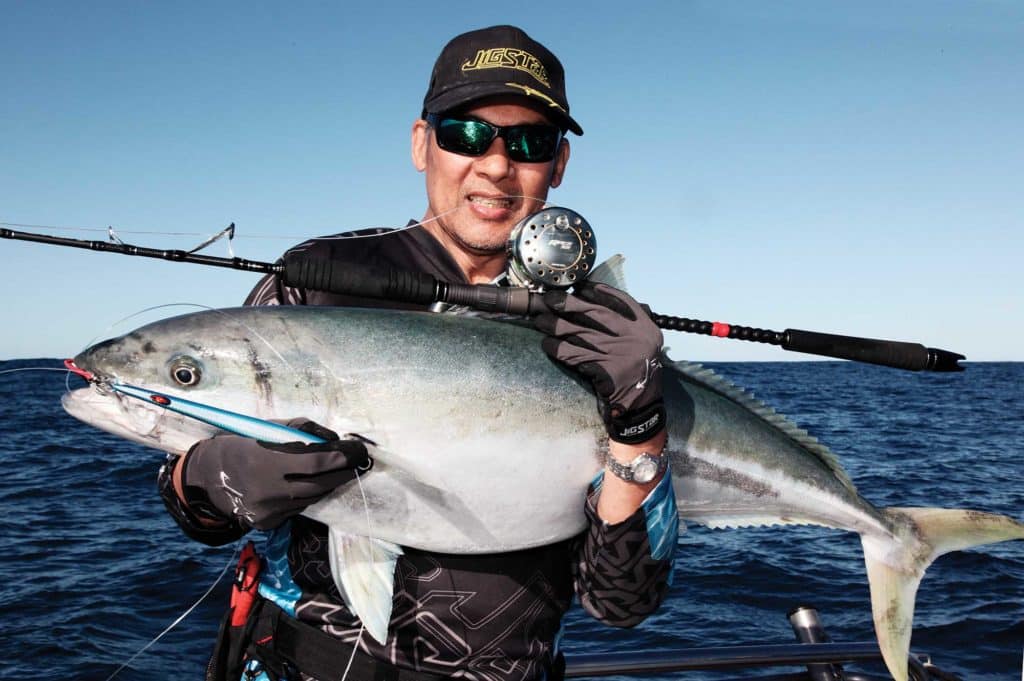
Gear (Retrieve) Ratio
Here again, the nod goes to conventionals because many offer an option for two speeds. The high speed (typically at least 6-to-1) helps speed jiggers move the lure quickly, and also works well for slow-pitchers, Chua says. The low gear, of course, offers power when winching a fish away from bottom.
Line Capacity
Keep in mind line capacity as well. If you intend to use a rig for dropping into really deep water, you’ll want to go conventional because many hold far more line for their size than spinners.
Drag
Clearly how much available drag a jig angler needs has much to do with his quarry. For smaller fish, most good reels of any type are likely to suffice. But for bigger game, 25 to 50 or more pounds of maximum drag will help win battles. Chua says drag is particularly important with slow-pitch jigging because when hooked up, the reel tends to do most of the work. (In speed jigging, the angler relies heavily on the rod to tire the fish.)
Cost
Performance differences between the two types of reels aside, cost can be a factor, Wong says: “It’s a fact that a premium spinning reel will cost more than a premium twin-drag conventional.”
Other Considerations
You want a jigging reel to be machined with tight tolerances: “no back play or handle slop,” as Ortiz puts it. He also says he prefers a taller, narrow-spool reel because it gives you a more consistent rate of retrieve. In wide-spool reels, the smaller line-on-spool diameter you’re left with when fishing deep means fewer inches per crank. Star-drag conventional reels are fine, but experts tend to prefer lever drags.
Picking a Jigging Rod
Jigging rods are designed for one purpose, Ortiz says: “to impart an action on a jig.” Not many rods truly do this effectively, he adds. A quality rod for jigging should, in Ortiz’s opinion, “have the ability to properly work a jig at various depths. The hallmark of a good jigging rod is an ability to effortlessly move a jig in deep water.”
Before picking out a jigging rod, Chua advises, “know where you’ll be fishing, with what types of jigs and weights, what line class, and in what depth and currents.”
Also, “beware of manufacturers who rebrand inshore blanks with a reconfigured grip and guide layout, and then call them slow-pitch rods,” Ortiz advises.
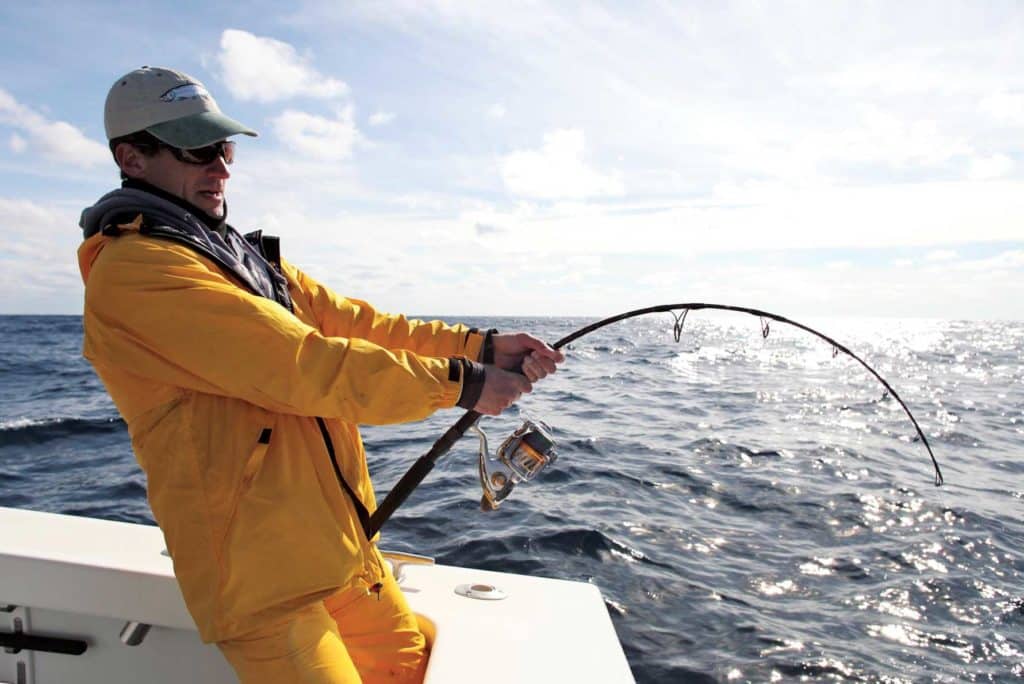
Serious, purpose-built jigging rods should show a rating both for braided line and jig weight. Some key parameters experts consider in rods for jigging include:
Action
Wong recommends rods with softer parabolic actions for most jigging. That allows the rod to load up on the upstroke and release on the downstroke. “It’s this loading and unloading recoil the angler feels; this will assist in developing the rhythm that’s so essential,” especially for speed jigging. Stiffer rods can still function this way if an angler uses larger, heavier jigs. Chua agrees that a parabolic (“slow”) action is best; its bounce-back capability is useful and less fatiguing both in working jigs and fighting fish.
Length
For deeper jigging, Chua’s speed-jig rods range from just over 5 feet to 5 feet, 7 inches. He says in shallower water, where water resistance is much less, he likes a rod from 5 feet, 7 inches to 6 feet, 3 inches. Most slow-pitch rods run 6 to 6½ feet.
For speed jigging, Wong prefers short rods—5 feet or a bit more. But for anglers using a less aggressive style than his, somewhat longer rods might be preferred, particularly with spinning reels. Song generally fishes 5- to 6-foot rods, noting that he prefers a moderately fast action in slow-pitch rods, with a “soft and delicate tip” but plenty of backbone.
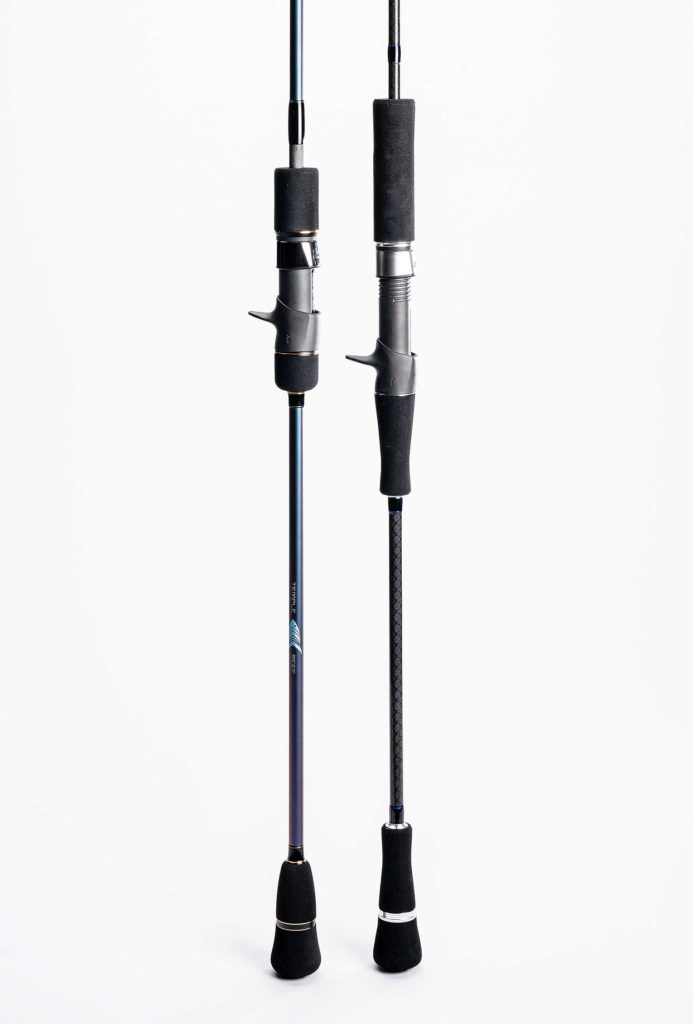
Weight
In jigging, where anglers are lifting repeatedly for long hours, weight—as with reels—is key. Good jigging rods are generally light. Recent advancement in rod design and materials allows for feather-light jigging sticks that are remarkably strong. Chua cites jig rods weighing about 10 ounces that can handle 300-pound tuna—“no kidding!” He says nano carbon fiber and graphene are probably the most advanced materials available for jigging rods.
Many of these rods are available only overseas and at steep prices. It’s worth noting that most tackle manufacturers in the United States are now offering excellent jigging rods, including those specifically for slow-pitch enthusiasts. Examples include Accurate’s line of Valiant rods, Okuma’s Metaloid slow-jigging rod, and Shimano’s Grappler Slow J1 and Trevala S jigging and casting rods.
Picking Jigs for Fishing
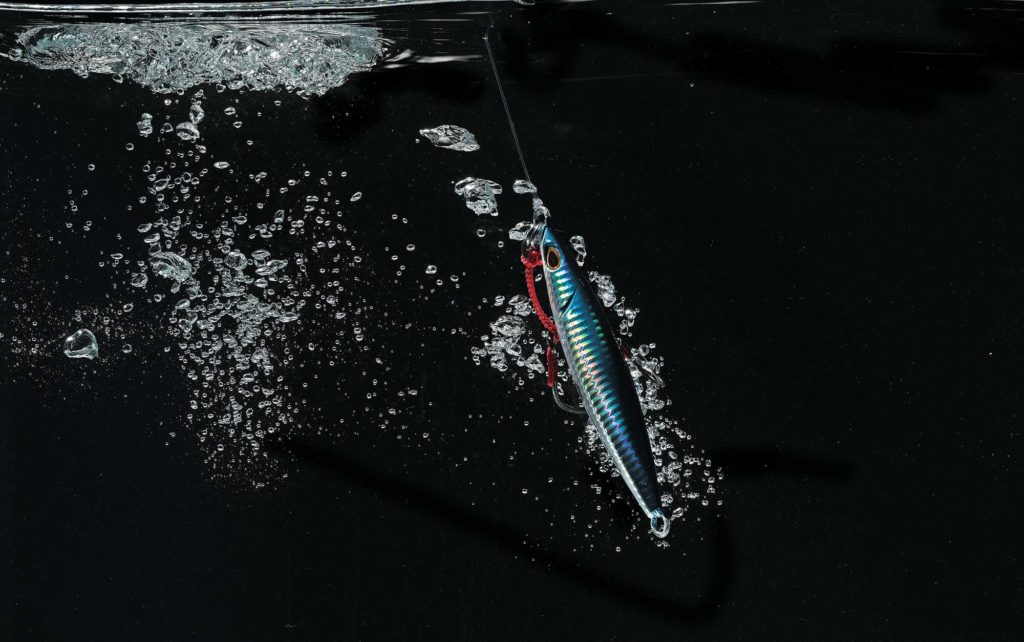
Shape
For speed jigging in deep water, Wong recommends streamlined, tail-weighted jigs. “These get down fast and are less likely to be pushed around in the current.” But, he points out, these also have less action on the retrieve, so the jigger has to work them hard and fast to make them swim. Chua’s also all about bottom-weighted, or tail-weighted, jigs for speed jigging. These drop in a sharp darting/-wobbling/sliding action.
Long knife jigs with a wider profile are Chua’s pick for tuna in particular; for grouper and amberjack, he’ll fish those long tail-weighted jigs. On the other hand, Song prefers short, center-balanced jigs for tuna.
Center-weighted jigs that are long, wide and flat are Wong’s choice for water that’s shallow or moderately deep. “These have a lot more action on the lift and drop. Their flutter also offers more hang time, which is especially valuable where shallower depth means less area to cover in the water column.”
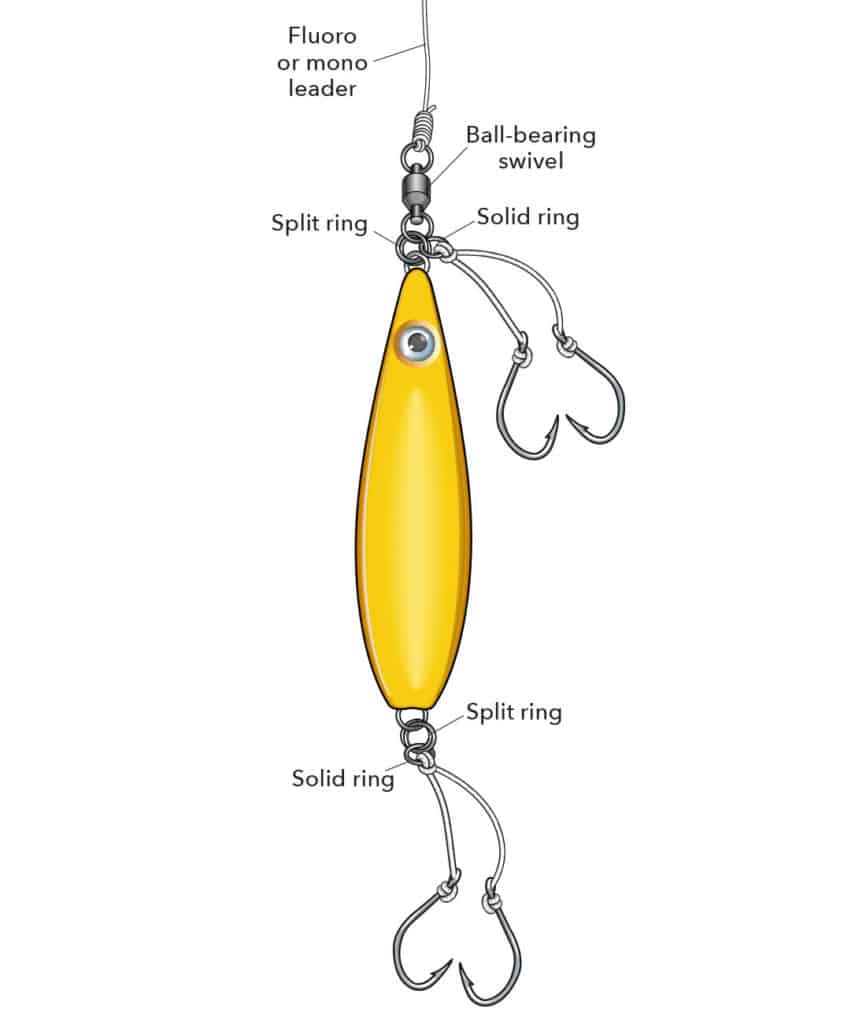
For slow-pitch jigging, Wong likes the “original, wide-body keel jig, the jig that made slow-pitch so popular. It’s easy to fish and responds to all nuances of rod movement.” He also likes “short, cigar-shaped jigs,” particularly in deeper water. “When worked, these exhibit a rolling, tumbling action, different from conventional tail-weighted jigs. Chua prefers slow-pitch jigs that are flat on one side and rounded on the other.
Ortiz points out that “it’s a common misconception that slow-pitch jigs have to be short, fat and flutter a lot.” In fact some longer, narrow jigs work well for slow-pitching, and their shape gives them a very quick fall into deep water. “The trick,” Ortiz says, “is knowing how every jig in your bag will fall.”
Other Considerations
Opinions vary on colors, but Chua mentions a preference for glow jigs that luminesce, particularly for deeper waters. As for size, many experts use jigs no heavier than necessary to reach bottom or any level they desire in given conditions. Chua also points out that, particularly with slow-pitch fishing, it’s paramount to match jigs, per their weight, to a rod’s action.
Four Jigging Experts
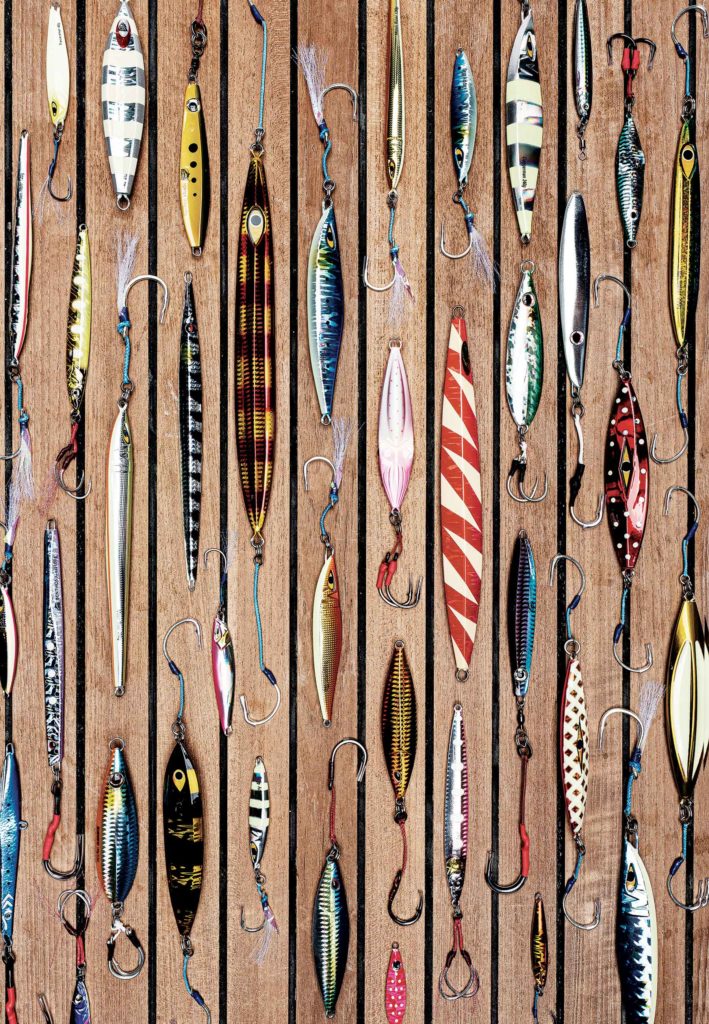
Paul Chua: Born and raised in Singapore, Chua began joining fishing adventures to Malaysia when he was 11. Since then, he’s fished the world, and been in the jigging and popping tackle business since 2007. Chua currently lives in the Northeast and is one of the jigging experts, along with Sami Ghandour, at Saltywater Tackle in Sayreville, New Jersey.
Benny Ortiz: Florida-based Ortiz (@mrbennyortiz) is a jigging master, whose expertise and success in slow-pitch has made him a featured speaker at various seminars as well as the subject of coverage in many regional and national magazines, including Sport Fishing. He’s a member of several pro teams.
Kil Song: Song has been described as a “jigging master.” Since 1980, the New Jersey resident has averaged more than one in three days on the water, many in some of the most productive jigging grounds around the world. Song operates the popular online specialty shop jignpop.com.
Chris Wong: An angling enthusiast who also runs a fishing-tackle import/distribution company in his native New Zealand, Wong’s regular trips to Japanese tackle exhibitions have given him an appreciation for the development of speed (“mechanical”) and slow-pitch jigging. Since 2007, he’s been producing his own brand of jigging rods—Jig Star—with frequent trips to New Zealand’s Three Kings Islands and Ranfurly Bank, which are among the world’s toughest testing grounds.

